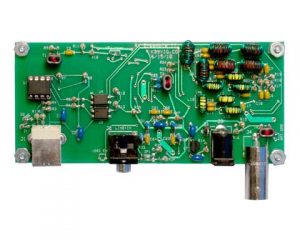Software Defined Radio
Software-defined radio (SDR) is a radio communication system where components that have been typically implemented in hardware (e.g. mixers, filters, amplifiers, modulators/demodulators, detectors, etc.) are instead implemented by means of software on a personal computer or embedded system. From Wikipedia, the free encyclopedia
One of the advantages of SDR is the ability to give anyone with access to a web browser the ability to listen to and tune a remote receiver. One of these systems is a site called WebSDR at www.websdr.org
This software was developed by an assistant professor at the University of Twente in the Netherlands.
Pieter-Tjerk De Boer http://wwwhome.ewi.utwente.nl/~ptdeboer/ is a radio amateur who wrote the SDR decoding and server software to enable anyone to set up a remotely accessible receiver and have it linked from his WebSDR page.
The club has set up two SDR receivers in the club shack, using the WebSDR software on a portion of the 80m and 40m bands via the following equipment.
The hardware consists of 2 x SoftRock RX Ensemble II HF receivers, one for each band.
These direct conversion receivers have software programmable oscillators and generate an in phase and quadrature audio component of the desired frequency.
These two audio streams are fed into an Asus U5 USB sound card via the stereo line in input. One for each receiver.
 The sound cards digitise the signal and feed it to the decoding software in a NUC box computer which is running a Linux Mint operating system.
The sound cards digitise the signal and feed it to the decoding software in a NUC box computer which is running a Linux Mint operating system.
The decoding and server software is adjusted via a config file to set parameters such as frequency coverage, number of users, etc.
The frequency range is determined by the bandwidth of the sound card being used, in this case it is 192kHz so it can be set only for a 192kHz slice of a particular band.
The software being used allows multiple users to independently tune signals and adjust modes, bandwidth, squelch, volume and to record an audio file of the signal.

